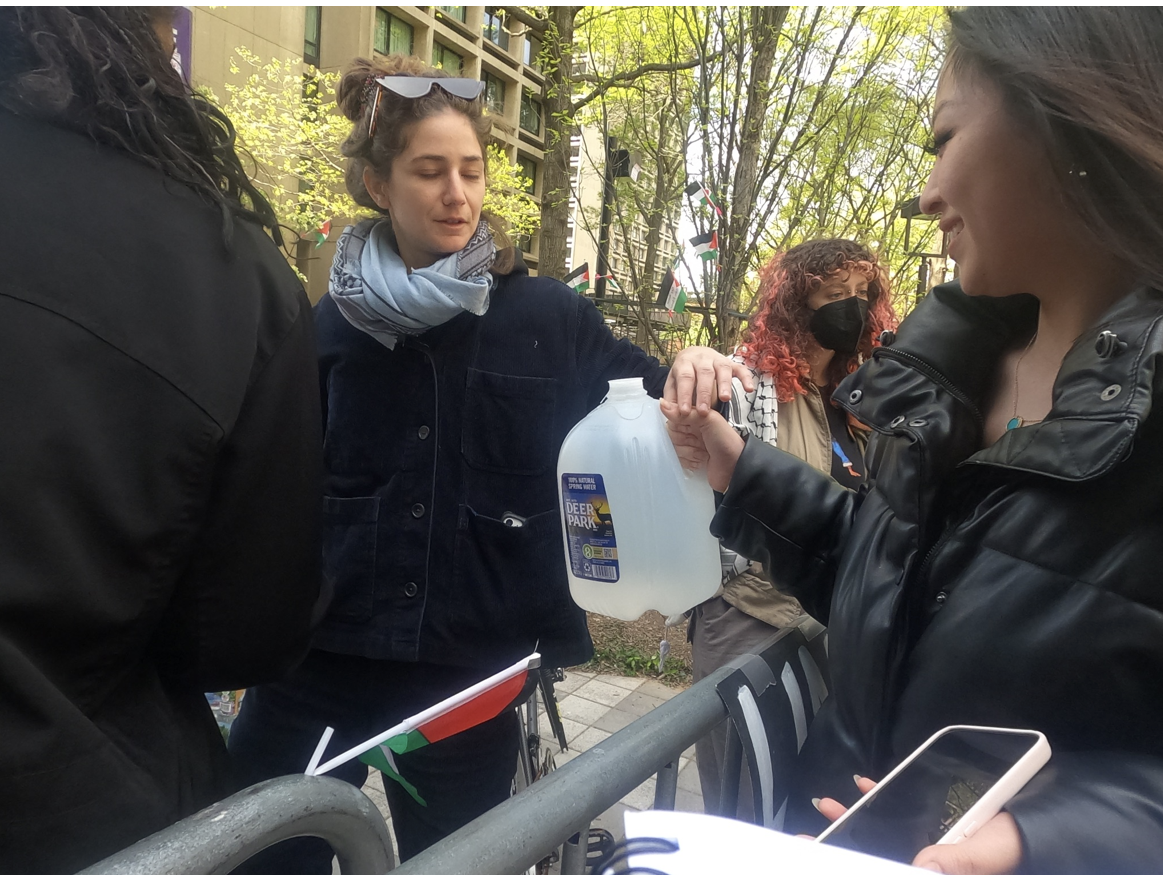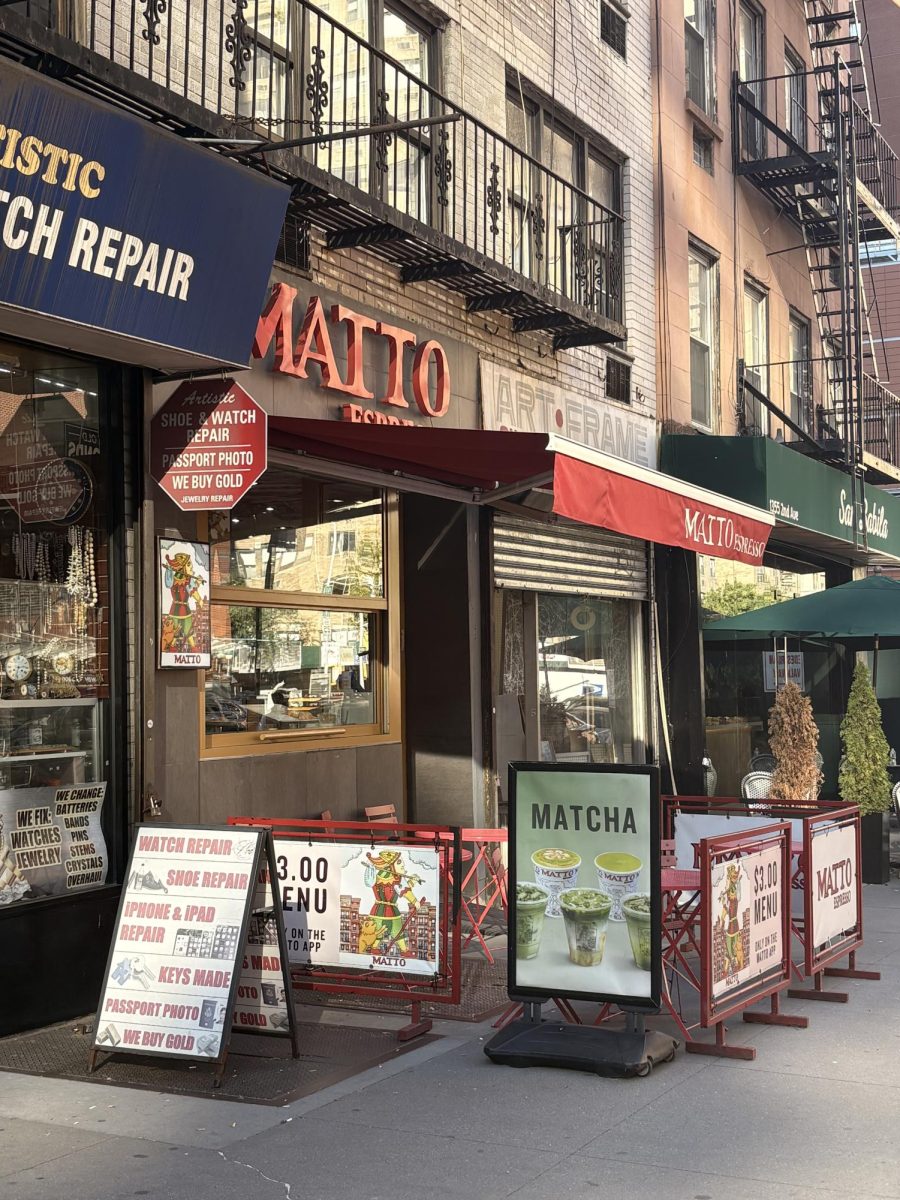On the morning of Saturday April 27th, I visited the NYU’s student encampment located outside the John A. Paulson Center on New York University campus at the intersection of Mercer and Bleecker streets in lower Manhattan. Students and faculty members were donning keffiyehs, a traditional Arab headdress, around their necks and faces. Each person was focused on different tasks like setting up sleeping bags, organizing supplies, or passing out flyers to students and others passing by the barricades. This is the fifth day after the NYU Gaza Solidarity encampment was established.
Throughout history student-led activism and protests have been at the forefront of changemaking in the United States. From the Vietnam Anti-War protests of the 1960s & 70s to the South African Apartheid Divestment Movements in the 1970s-1980s, to the Black Lives Matter Student protests in 2020, college and university students have played a pivotal role in advocating for justice, equality, and systematic change in this country and globally. On April 17th, 2024, students at NYC’s Columbia University established the “Columbia University Gaza Solidarity Encampment”, to show camaraderie with the people of Palestine and protest their university’s role in funding the ongoing war on Gaza. This student-led movement spread like wildfire to college and university campuses across the nation and of course New York City was no exception.
On the Saturday midday I was at the NYU protest, I was approached by NYU Professor Paula Chakravartty who invited me to come closer to the barricades of the encampment and speak with student organizers. Beyond the barricades, no one without an NYU ID could enter the campsite. Standing at the partition I watched as other students and community members came to drop off water, food, and other supplies to support their peers. Soon after, I spoke with NYU Law student and activist Ryna Workman. Earlier this semester, Workman, who uses they/them pronouns, was removed from their position as president of the NYU Law student government after they sent a campus-wide email expressing their support for Palestinian revolution after October 7th. Workman told me about how the original encampment was established on Monday, April 22nd at Gould Plaza on West 4th street but the university was against that. “They sent in riot police and 128 people were arrested including majority students and 20 faculty. It was very scary; they were pepper spraying people.” Workman also informed me that the students were not going to let intimidation tactics stop them. On Friday, April 26, they made the decision to relocate the campsite to the Paulson Center, where they had been conducting de-occupation organizing for the whole semester. According to Workman, the purpose of the encampment is to demand that NYU divest from supporting Israeli weapons manufacturing and close its satellite campus in Tel Aviv, Israel. In addition, they expressed their desire to create an environment in which students may communicate and engage in civil conversations on Palestine and other social issues without fear of consequences like suspension, expulsion, or even arrest.
I asked Workman about what students are doing while camping out and they told me about “The People’s University,” an initiative from the National Students for Justice in Palestine for students participating in encampments to schedule their days with engaging and educational activities, classes, and conversations. Students were gathered going over their itinerary for the day as we were conversing. Workman told me about how with the overabundance of donated supplies the encampment has been receiving they were able to provide support for the houseless community around the area with sleeping bags, snacks, and even first aid. I ended with asking Workman how long they plan for the encampment to last. They responded with a protest chant “Disclose, Divest, we will not stop, we will not rest-–and we mean that shit.”
I left NYU and made my way uptown to Columbia University around 1:30pm . I exited the subway station and was confronted by a heavy police presence outside of Columbia’s main gate on Amsterdam Ave. The Columbia University Gaza Solidarity encampment is located on the South Lawn behind the main gate. All entrances to the university were heavily guarded by police and only members of the Columbia community were allowed in–restricted access to the otherwise open campus prompted me to leave.
Six days later on May 1st, 2024, the fast growing movement for student solidarity with Gaza made its way to Marymount Manhattan College’s main campus on 71st street, during the college’s annual Strawberry Fest. I watched as the peaceful group of MMC students chanted “Free, Free Palestine” and “Viva, viva Palestina.” Despite intimidation from counter protesters–most of whom were not a part of the MMC community–the students continued to chant even as police arrived, barricading the students while separating the counter-protestors across and closing off 71st street. The students dispersed later that evening.
Student protests such as these I witnessed are continuing leading to conflict but also discussion and change just as past protests have.

(Peyton Weeks)




















Aliyah • Jan 17, 2025 at 1:55 pm
I don’t think they even know what they are protesting for…. Do they know in a free Palestine, the penalty for being gay is to be thrown off a building? There should have been a counter LGBQT protest.
Mike Herbers • May 11, 2024 at 12:51 pm
Great article Peyton!